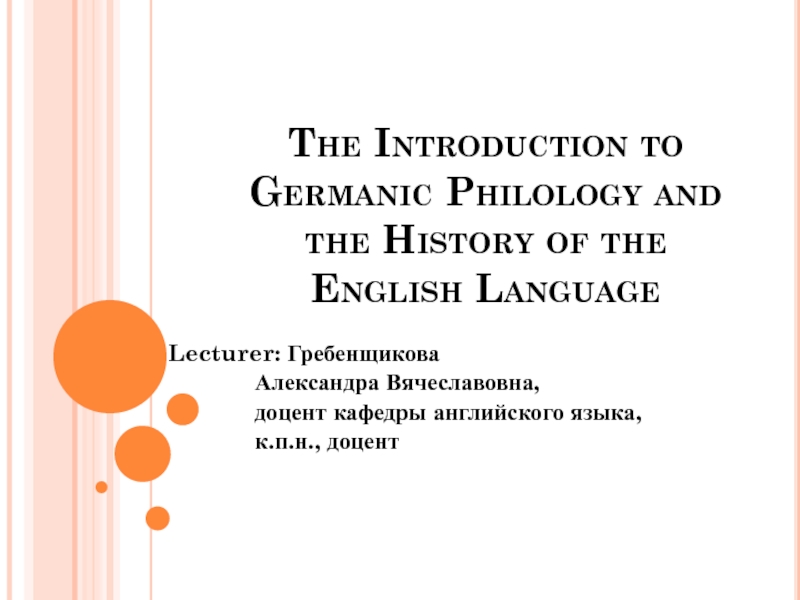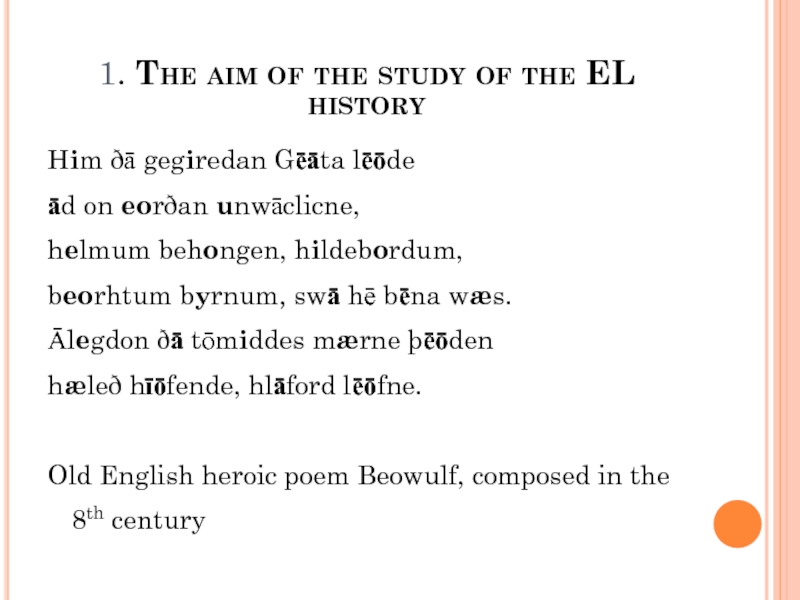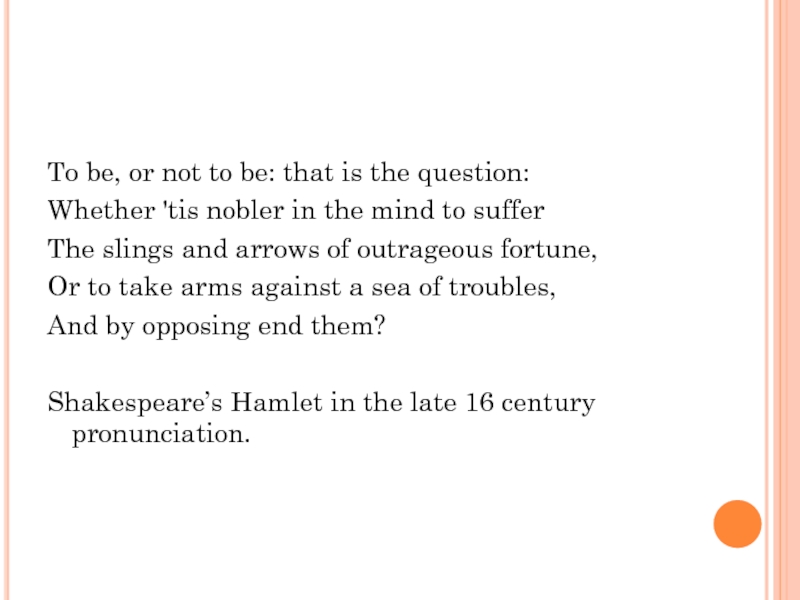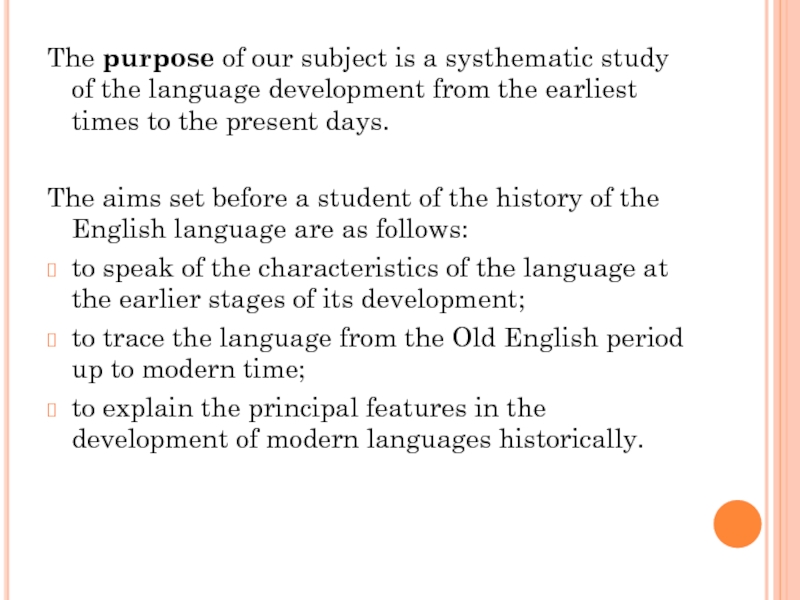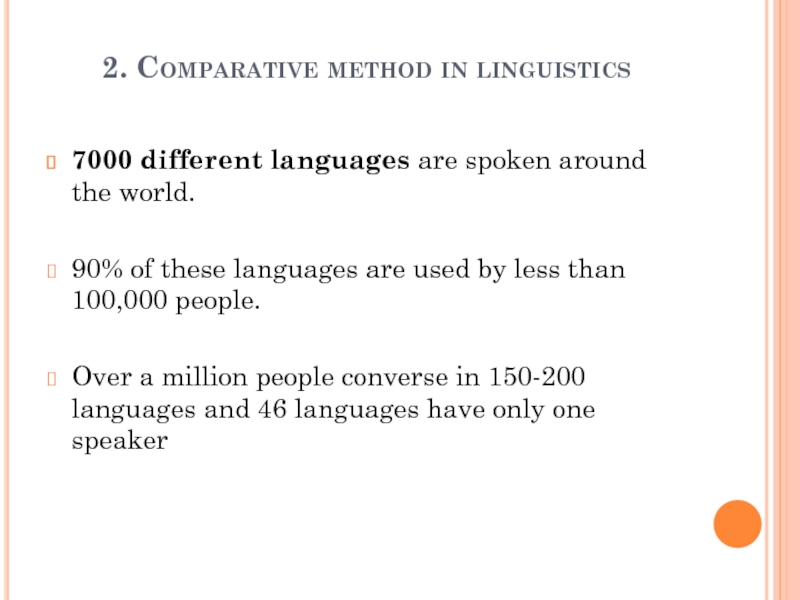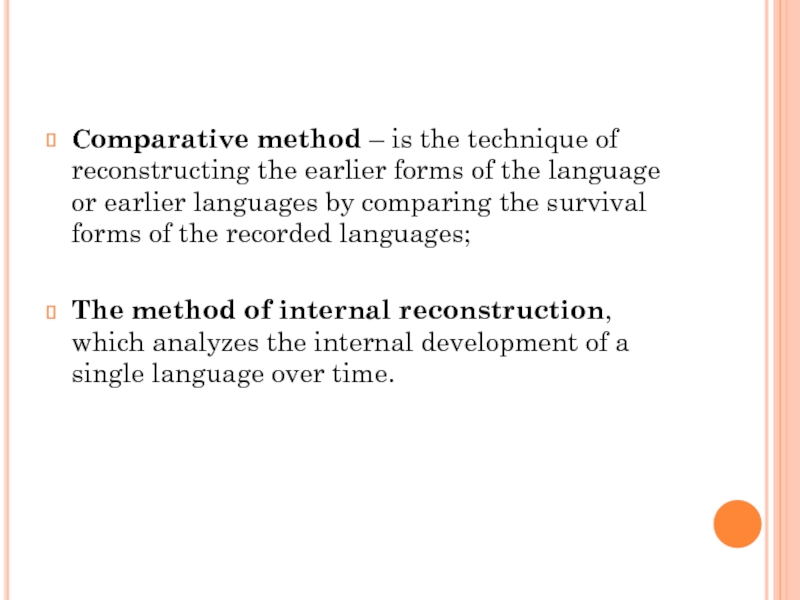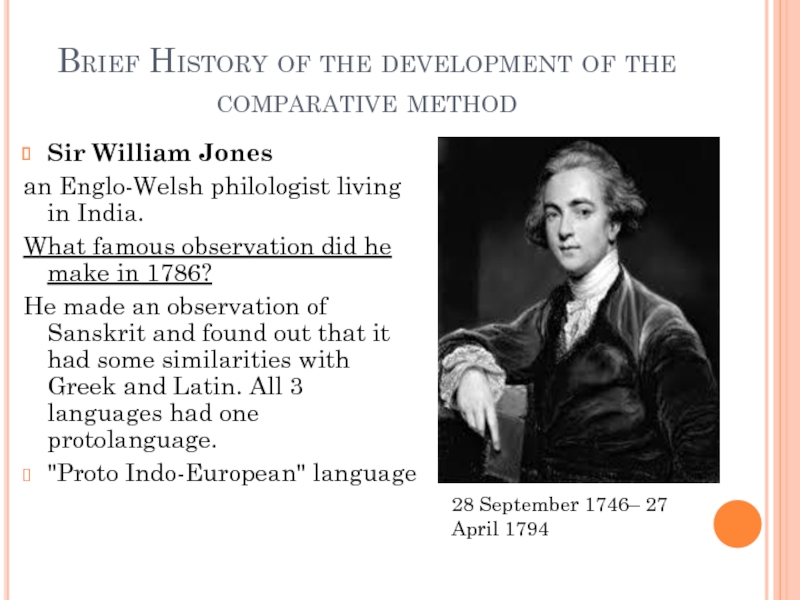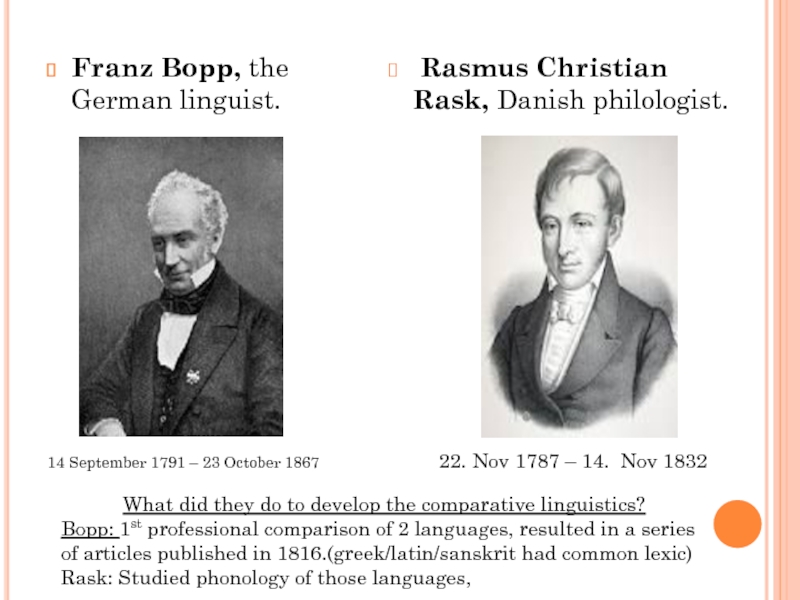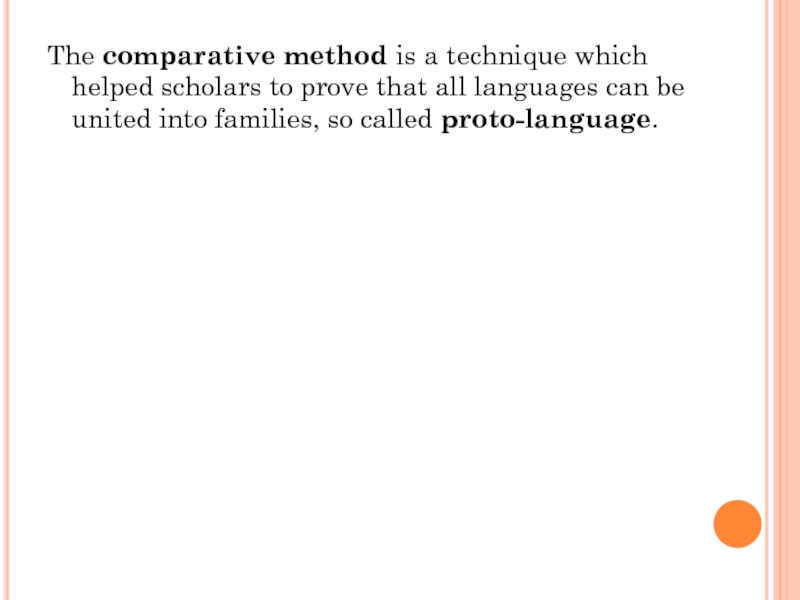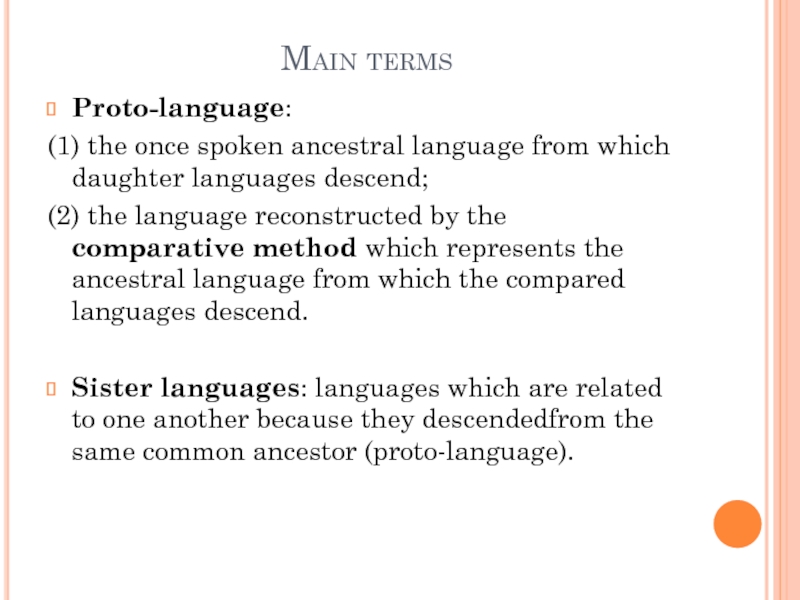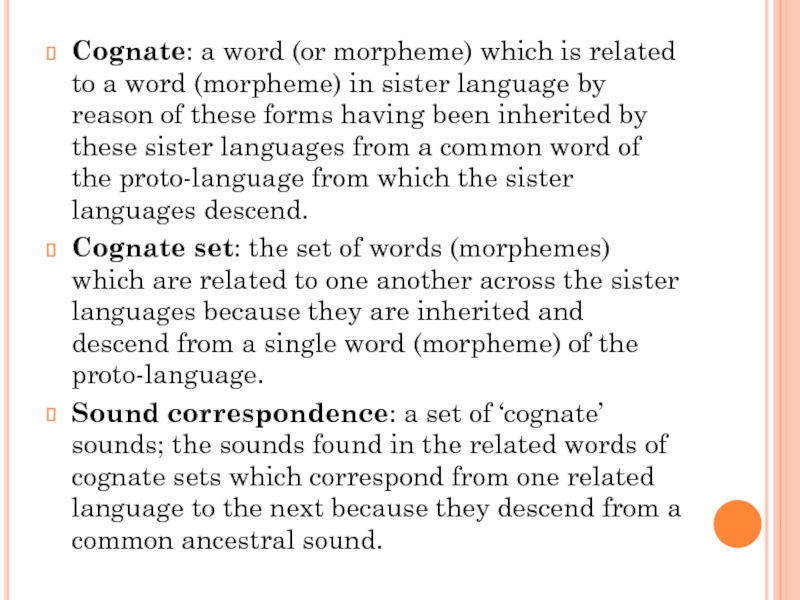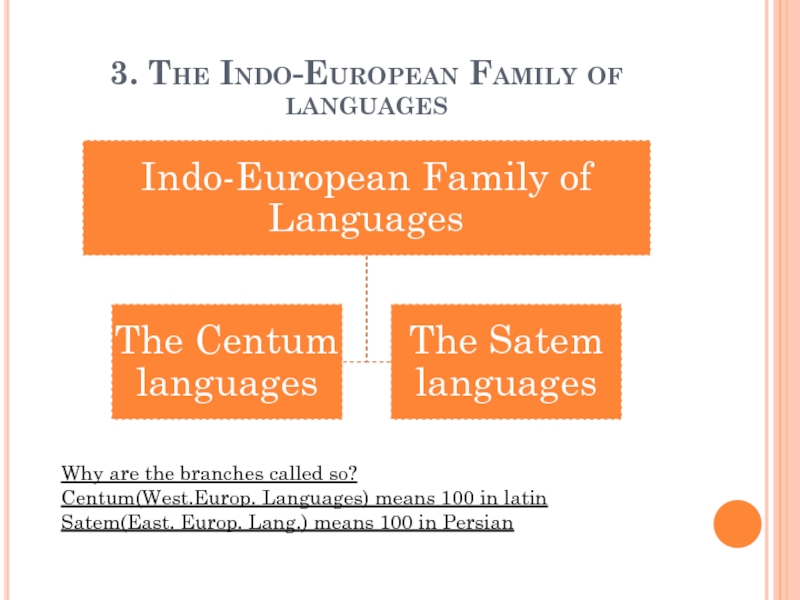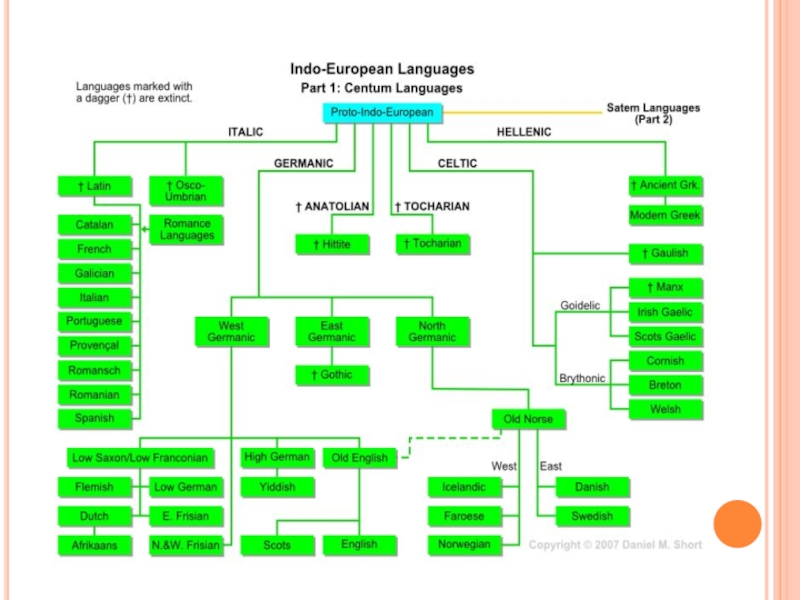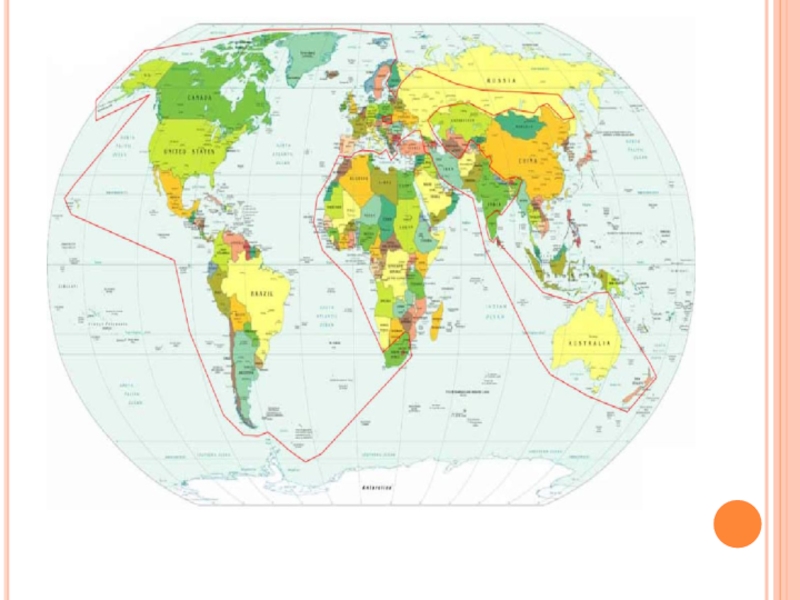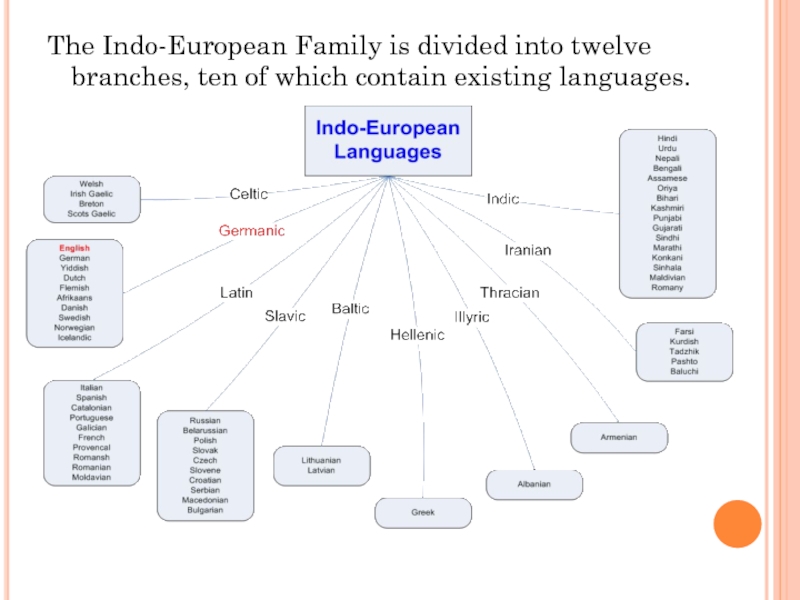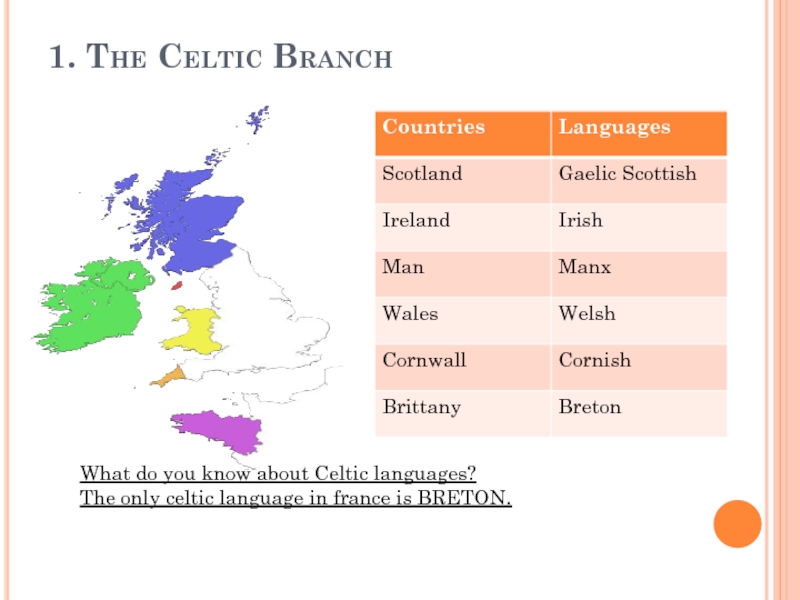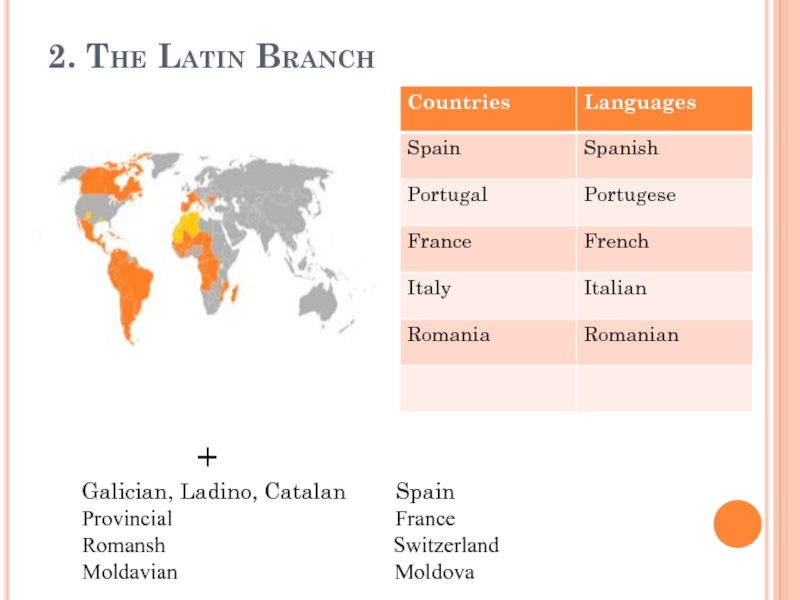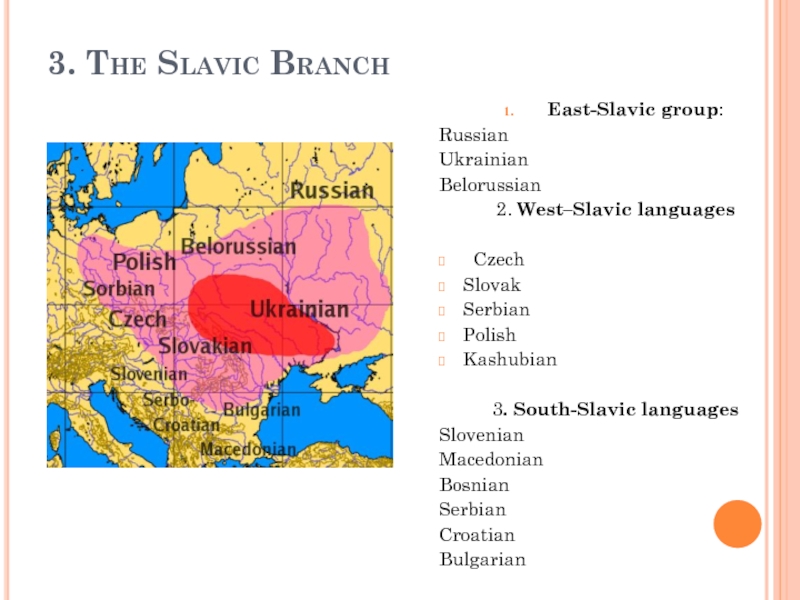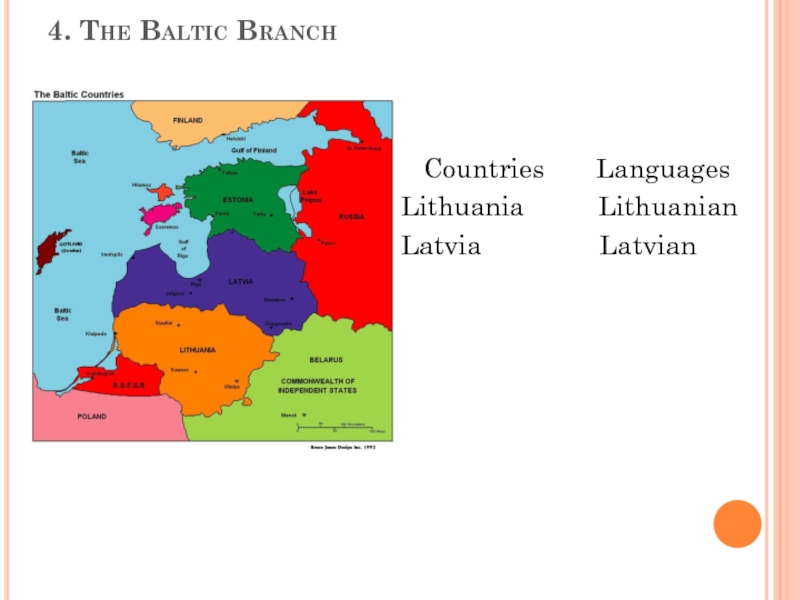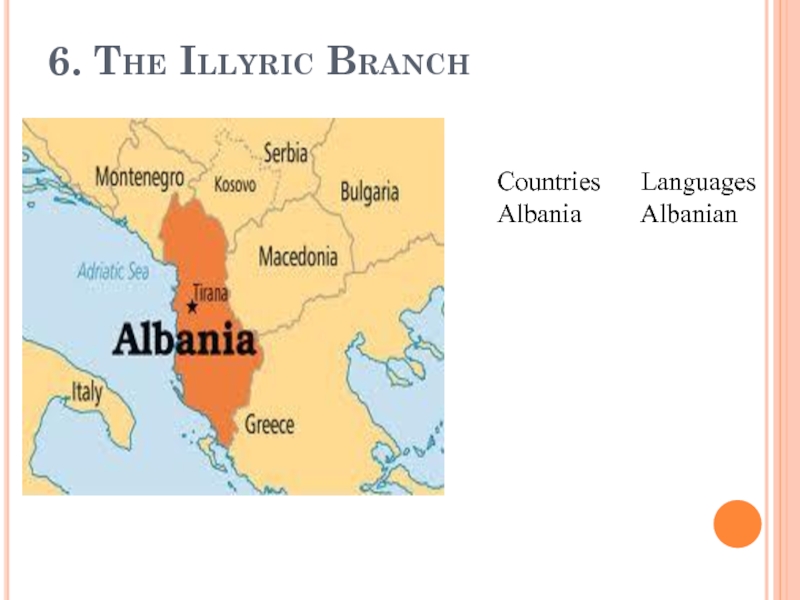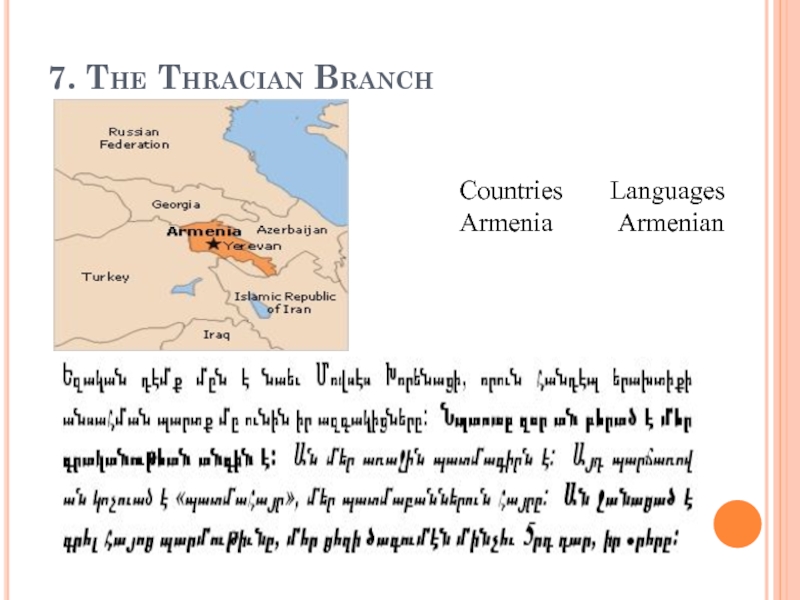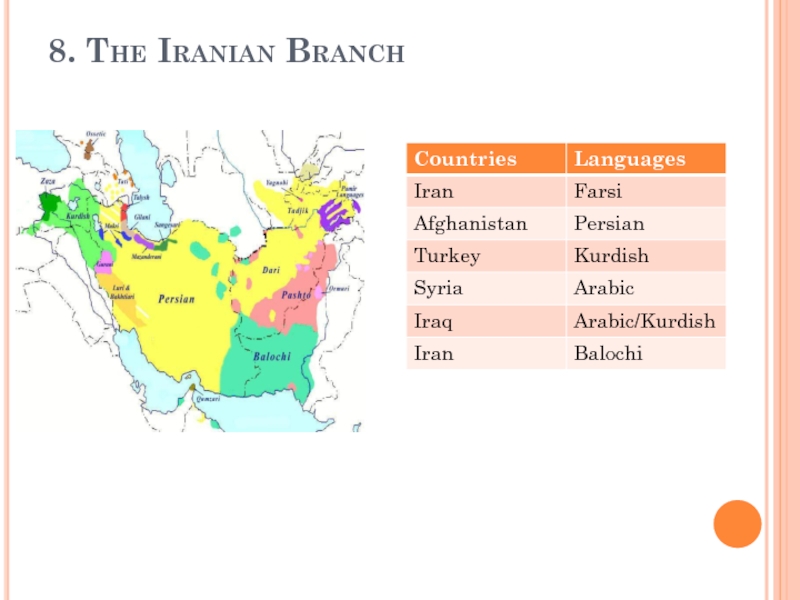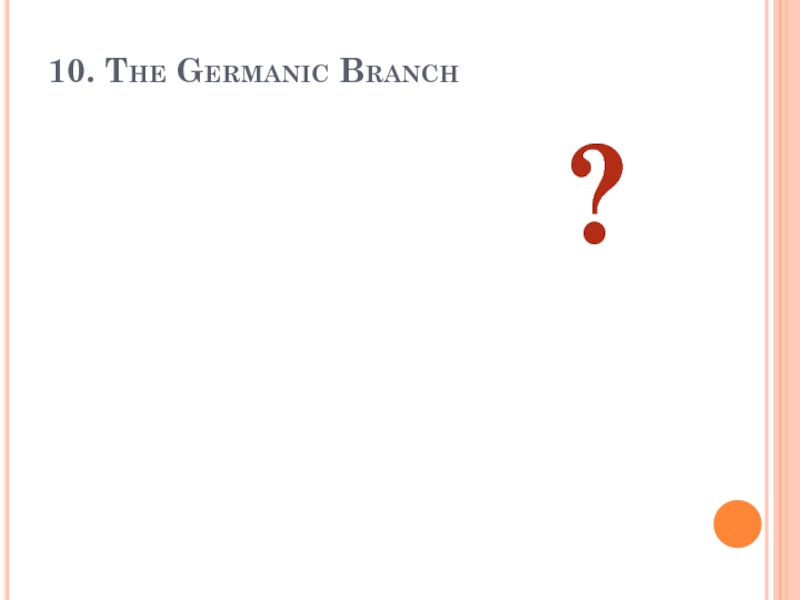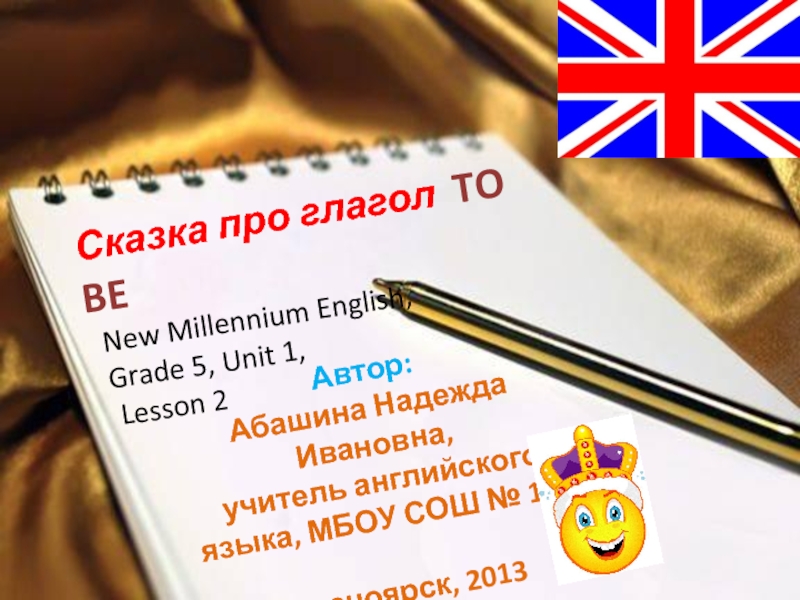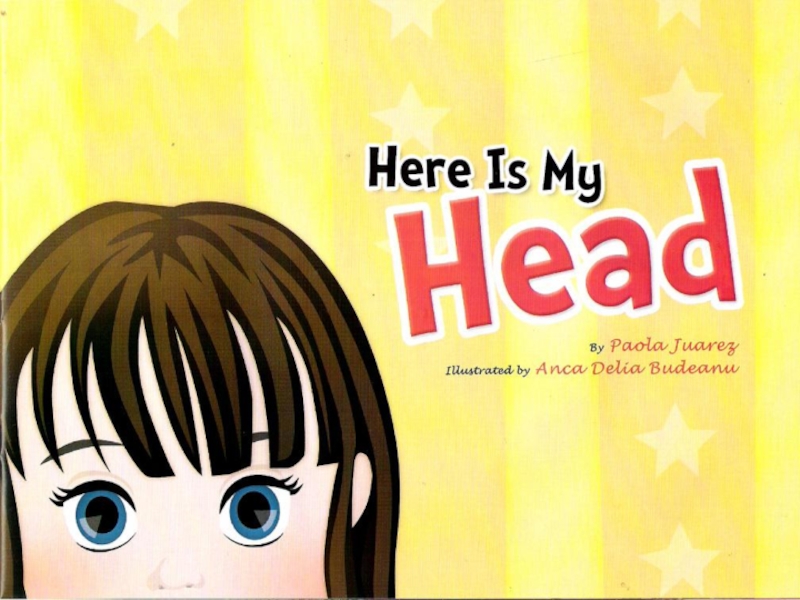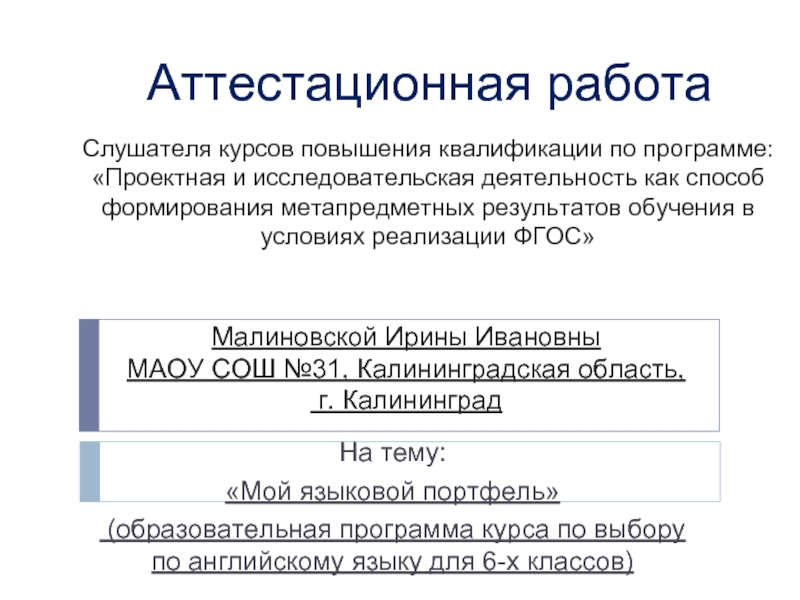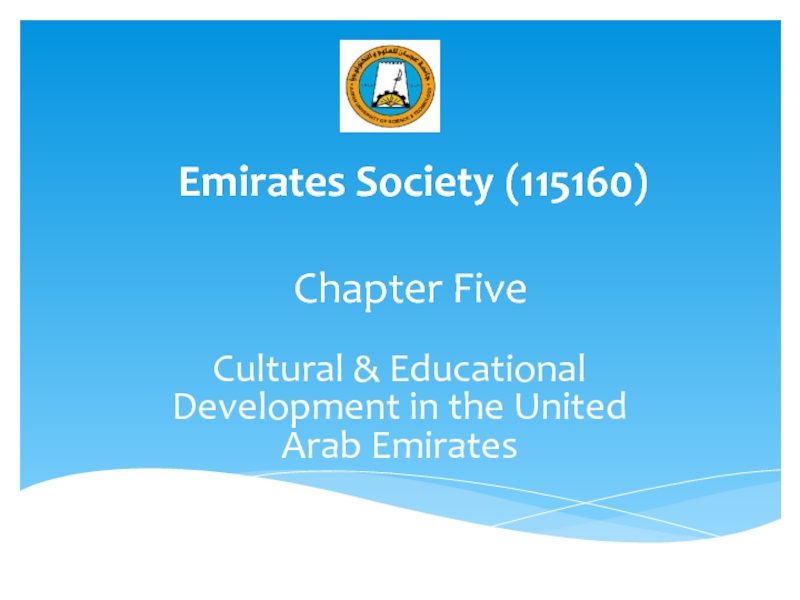Lecturer: Гребенщикова
Александра Вячеславовна,
доцент кафедры английского языка,
к.п.н., доцент
- Главная
- Разное
- Дизайн
- Бизнес и предпринимательство
- Аналитика
- Образование
- Развлечения
- Красота и здоровье
- Финансы
- Государство
- Путешествия
- Спорт
- Недвижимость
- Армия
- Графика
- Культурология
- Еда и кулинария
- Лингвистика
- Английский язык
- Астрономия
- Алгебра
- Биология
- География
- Детские презентации
- Информатика
- История
- Литература
- Маркетинг
- Математика
- Медицина
- Менеджмент
- Музыка
- МХК
- Немецкий язык
- ОБЖ
- Обществознание
- Окружающий мир
- Педагогика
- Русский язык
- Технология
- Физика
- Философия
- Химия
- Шаблоны, картинки для презентаций
- Экология
- Экономика
- Юриспруденция
The Introduction to Germanic Philology and the History of the English Language презентация
Содержание
- 1. The Introduction to Germanic Philology and the History of the English Language
- 2. Lecture 1. Introduction to the study of
- 3. 1. The aim of the study of
- 4. Whan that Aprille
- 5. To be, or not to
- 6. The purpose of our subject is a
- 7. 2. Comparative method in linguistics 7000
- 8. Сomparative method – is the
- 9. Brief History of the development of the
- 10. Franz Bopp, the German linguist.
- 12. The comparative method is a technique which
- 13. Main terms Proto-language: (1) the once
- 14. Cognate: a word (or morpheme) which is
- 15. 3. The Indo-European Family of languages Why
- 19. The Indo-European Family is divided into twelve
- 20. 1. The Celtic Branch What
- 22. 3. The Slavic Branch East-Slavic group: Russian
- 23. 4. The Baltic Branch
- 24. 5. The Hellenic Branch Countries
- 25. 6. The Illyric Branch Countries
- 26. 7. The Thracian Branch Countries
- 27. 8. The Iranian Branch
- 28. 9. The Indic Branch
- 29. 10. The Germanic Branch ?
Слайд 1The Introduction to Germanic Philology and the History of the English
Слайд 2Lecture 1. Introduction to the study of the language
Plan
The aim
Investigating method in Linguistics
The Indo-European (IE) Family of languages
Слайд 31. The aim of the study of the EL history
Him ðā
ād on eorðan unwāclicne,
helmum behongen, hildebordum,
beorhtum byrnum, swā hē bēna wæs.
Ālegdon ðā tōmiddes mærne þēōden
hæleð hīōfende, hlāford lēōfne.
Old English heroic poem Beowulf, composed in the 8th century
Слайд 4
Whan that Aprille with his shoures sote
The droghte of
Chauce’s Caunterbury Tales, the Middle English from the end of 14th century
Слайд 5
To be, or not to be: that is the question:
Whether
The slings and arrows of outrageous fortune,
Or to take arms against a sea of troubles,
And by opposing end them?
Shakespeare’s Hamlet in the late 16 century pronunciation.
Слайд 6The purpose of our subject is a systhematic study of the
The aims set before a student of the history of the English language are as follows:
to speak of the characteristics of the language at the earlier stages of its development;
to trace the language from the Old English period up to modern time;
to explain the principal features in the development of modern languages historically.
Слайд 72. Comparative method in linguistics
7000 different languages are spoken around the
90% of these languages are used by less than 100,000 people.
Over a million people converse in 150-200 languages and 46 languages have only one speaker
Слайд 8
Сomparative method – is the technique of reconstructing the earlier forms
The method of internal reconstruction, which analyzes the internal development of a single language over time.
Слайд 9Brief History of the development of the comparative method
Sir William Jones
an Englo-Welsh philologist living in India.
What famous observation did he make in 1786?
He made an observation of Sanskrit and found out that it had some similarities with Greek and Latin. All 3 languages had one protolanguage.
"Proto Indo-European" language
28 September 1746– 27 April 1794
Слайд 10Franz Bopp, the German linguist.
14 September 1791 – 23 October 1867
22. Nov 1787 – 14. Nov 1832
What did they do to develop the comparative linguistics?
Bopp: 1st professional comparison of 2 languages, resulted in a series of articles published in 1816.(greek/latin/sanskrit had common lexic)
Rask: Studied phonology of those languages,
Слайд 12The comparative method is a technique which helped scholars to prove
Слайд 13Main terms
Proto-language:
(1) the once spoken ancestral language from which daughter
(2) the language reconstructed by the comparative method which represents the ancestral language from which the compared languages descend.
Sister languages: languages which are related to one another because they descendedfrom the same common ancestor (proto-language).
Слайд 14Cognate: a word (or morpheme) which is related to a word
Cognate set: the set of words (morphemes) which are related to one another across the sister languages because they are inherited and descend from a single word (morpheme) of the proto-language.
Sound correspondence: a set of ‘cognate’ sounds; the sounds found in the related words of cognate sets which correspond from one related language to the next because they descend from a common ancestral sound.
Слайд 153. The Indo-European Family of languages
Why are the branches called so?
Centum(West.Europ.
Satem(East. Europ. Lang.) means 100 in Persian
Слайд 19The Indo-European Family is divided into twelve branches, ten of which
Слайд 201. The Celtic Branch
What do you know about Celtic languages?
The only
Слайд 21 +
Galician, Ladino, Catalan
Provincial France
Romansh Switzerland
Moldavian Moldova
2. The Latin Branch
Слайд 223. The Slavic Branch
East-Slavic group:
Russian
Ukrainian
Belorussian
2. West–Slavic languages
Czech
Slovak
Serbian
Polish
Kashubian
3. South-Slavic languages
Slovenian
Macedonian
Bosnian
Serbian
Croatian
Bulgarian
